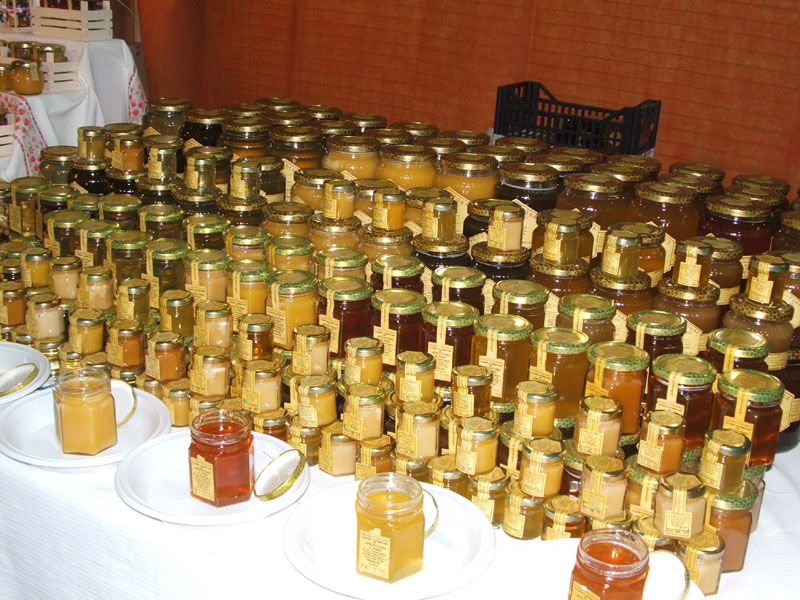Honey
Man has been using honey and wax since Prehistory (approximately 7,000 BC) collecting it from the nests built into tree cavities or ravines among the rocks. Several archaeological finds witness that beekeeping was a very important activity for all the ancient people: from the Egyptians who used to move the beehive by boat to exploit the different flower blooming along the course of the river Nile to the Greeks who, with Aristoteles, tried to interpret the biological phenomena of the bee communities.
The production of honey is linked to the presence of bees in the territory, their distribution, and health status.
It is also linked to the quality of flowers from which the insects collect the very precious nectar.
In Umbria, one of the regions with the lowest level of air pollution both for the shortage in industries in the area and low density of population, honey is characterized by top-quality products with excellent nutritional and therapeutic values.
In STINA Park, the following honey varieties are produced:
The mixed flower honey is the most generic one: it is produced in spring with several flower varieties. It is liquid and generally has an orange color. In November and December it starts crystallizing, becoming more and more solid. It is very required by the elderly.
Honeydew honey is a forest honey obtained from the lymph of the plants. It is dense, sweet, very dark, and does not crystallize. Excellent quality honey.
Chestnut honey is a liquid and dark honey, with a slightly bitter aftertaste. It does not crystallize. It is very used together with spicy cheese varieties.
Acacia honey is the most sought-after among traditional honey varieties. It is clear, very beautiful, almost perfect. It is very sweet and does not crystallize. It is the most suitable honey for children. It is delicious together with not very mature cheese and not very spicy products.







